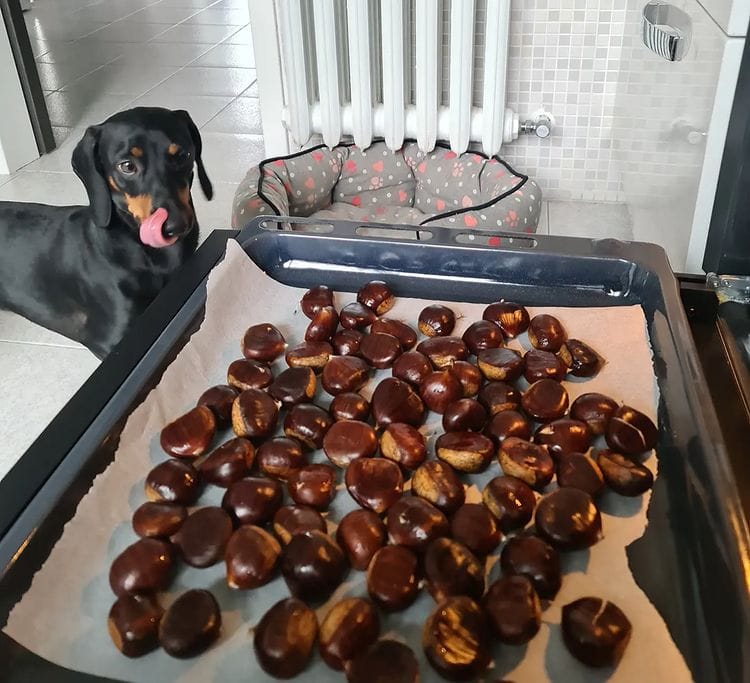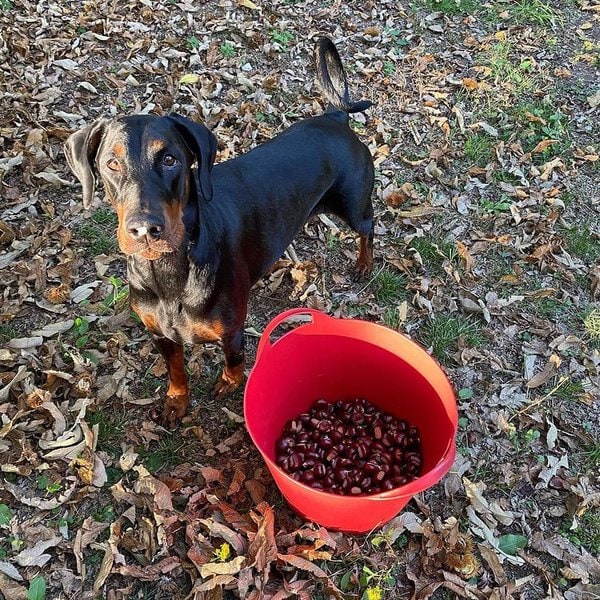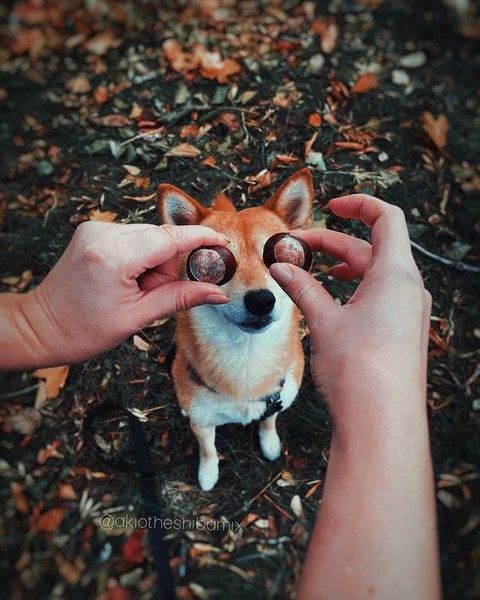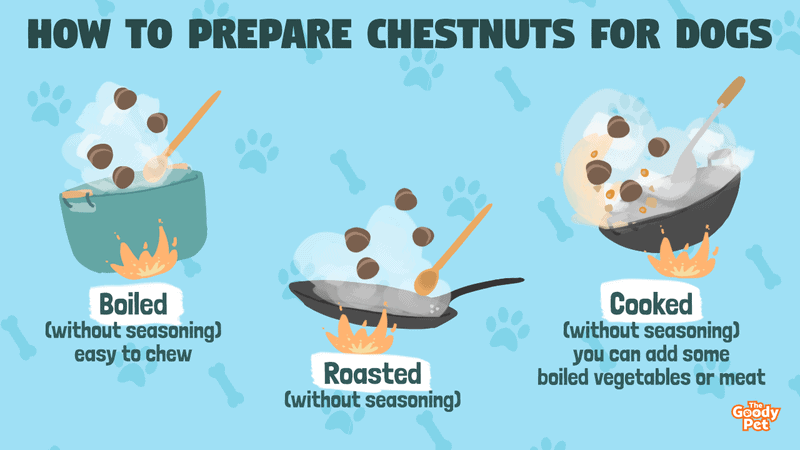Chestnuts are little munchies packed with high nutritional value. It boosts heart health, digestion and even controls blood sugar levels. With all these perks, you must be thinking, can you feed your dog chestnuts?
Yes, dogs can eat chestnuts, usually in small quantities and in moderation. It is better to prepare either boiled or roasted chestnuts for your dog, as raw ones can be hard to chew. However, before feeding, make sure your dog isn’t allergic to nuts.
What you can do is to give your dog a tiny portion to see its reaction before moving towards larger amounts. In addition, there are around nine types of chestnuts, out of which only one is edible. We will tell you all about it and how to tell the difference between toxic and non-toxic chestnuts. So, tag along to have proper insight!
Are Chestnuts Good For Dogs?

Plain chestnuts loaded with vitamins, fiber, and omega-3 fatty acids are perfect for your dog.
You have to avoid getting the pre-prepared nuts seasoned with salt as they will harm your pup. You can go for American chestnuts, which are suitable for dogs if fed in small amounts.
Benefits Of Chestnuts
There are numerous health benefits of chestnuts, some of which are as mentioned below.
- Due to being high in protein, these nuts lower the risk of dogs becoming overweight, eventually preventing heart diseases.
- Compared to other fatty foods, consuming chestnuts consisting of omega-3 fatty acids significantly enhances heart and brain function. It will also make your dog’s fur healthy and luscious.
- With 850 mg of fiber contained in every ounce of chestnuts, it is an excellent source of fiber. It will help your dog’s digestive system to work correctly, which prevents diarrhea or constipation.
- These nuts also contain high amounts of potassium, with 138 mg in every ounce of chestnuts. Due to this, it improves your dog’s muscle activity and nerve impulses, which will help him have a better reflex action.
- Chestnuts are low in fat, so you can add them to your dog’s diet if you want to control the number of calories it consumes.
How To Prepare Chestnuts For Dogs?
The optimal way of preparing chestnuts for your dog is by roasting them. After cooling the roasted chestnuts, peel away its outer shell and break it into tiny parts.
You can efficiently serve roasted chestnuts as delicious and healthy treats to your dogs from time to time. If you are wondering how many chestnuts a dog can eat? Then, you can give your dog around five chestnuts a week. We recommend not going over this limit as feeding your dog lots of chestnuts can lead to an upset stomach.
The reason is that these nuts have starch which becomes problematic for dogs to digest if it is overloaded. In the beginning, your dog will vomit or get diarrhea, but it can also cause pancreatitis in worse-case scenarios.
Now let’s look at how you can prepare chestnuts to provide full nutritional value to your dog without overfeeding him.
Roasted Chestnuts
For making roasted chestnuts, all you need is a pan and a spatula. You just have to add the nuts and roast them without adding seasoning, including salt or pepper. It is because dogs’ digestive system is different from humans and somewhat sensitive. Thus, making it hard for them to process any spices.
Boiled Chestnuts
Boiled chestnuts are the way to go when you don’t have time to prepare roasted chestnuts. Plus, if your dog finds it hard to chew nuts, then boiling is the best option. It will soften the chestnuts and make it easier for your dog to chew them. However, we recommend boiling the chestnuts in plain water with no added salt, pepper, or sugar.
Cooked Chestnuts
If you want to add chestnuts to your dog’s daily meal, then you can consider cooking it with other ingredients. However, make sure all of the elements you add are safe for dogs. For instance, you can add some boiled vegetables or meat but avoid adding onions, garlic, and spices. Still, we recommend sticking to feeding pure chestnuts to your dog to get the most out of its health benefits.

Are Chestnuts Toxic To Dogs?
The toxicity of chestnuts largely depends on their type. To dogs, for instance, sweet chestnuts are non-toxic, while horse chestnuts are poisonous.
People tend to confuse horse chestnuts growing on the conker tree with the sweet chestnut tree. In fact, a study by ANSES shows that 11% of poisoning cases resulted from the confusion between these chestnuts.
Moreover, if your dog accidentally eats horse chestnuts, it will get poisoned and experience digestive disorders. It will go through severe abdominal pain, nausea, throat irritation, and vomiting.
So to prevent your puppy from getting poisoned, let’s check out how you can distinguish horse chestnuts from sweet chestnuts?
Horse Chestnuts VS Sweet Chestnuts
The most obvious way to tell these two chestnuts apart is by observing the shape of the cupule, the nuts inside it, and where the chestnuts are grown.

Difference Between Cupule And Nuts
The shell of sweet chestnuts is often referred to as a burr, and its physical appearance is different from horse chestnut. It is brown with a lot of long spines with bristles. Plus, sweet chestnuts have at most 2 to 3 small-sized nuts, which are flat and triangular.
In comparison, a horse chestnut’s shell is thick and green in color. It has short spikes spaced widely and has only one large nut, which is round in shape.
Location Of Trees And Shape Of Leaves
Horse chestnut trees are commonly located in parks, alleys, or cities. Their leaves have numerous oval-shaped leaflets, giving the whole leaf the shape of a palm. So, if you take your pup on a walk and notice it putting a bristly nut into its mouth, stop your dog right away! It’s a horse nut.
On the other hand, sweet chestnut trees are located in woods or orchards. You can identify these trees by their simple and long leaves with no leaflets.
How Can Chestnuts Be Bad For Dogs?
Chestnuts are safe and healthy treats for your dog. But, raw chestnuts or store-bought chestnuts can cause problems for your pup.
Some other things are slightly off with chestnuts that may harm your pup if you aren’t careful beforehand. So, there is nothing wrong with the chestnuts, but instead, it’s a problem with some prepping or buying methods.
Raw Chestnuts
It is dangerous to feed your dog raw chestnuts with shells because they can be hard to break and chew. In case your dog tries to swallow a raw chestnut whole, it may choke.
In other cases, if your dog can eat it without gagging, the chestnut can cause a blockage in its stomach or intestines. So, it is best to boil, roast, or cook the chestnuts before feeding them to your pup.
Actually, you can feed raw chestnuts to your dog but you can do so only by removing the shell of the chestnut and breaking it into small pieces. In this way, it will be easy for him to eat it without choking.

Store-Bought Chestnuts
Store-bought chestnuts are saturated with salt for adding extra flavor, which is okay for humans but not dogs. Anything over the daily need can lead to sodium ion poisoning. Also, excessive intake of sodium leads to dehydration. All of this ultimately causes vomiting, diarrhea, frequent thirst, and possibly seizures.
This problem can be treated if you refer to the vet right away. Not providing immediate treatment can also lead to severe and permanent damage to a dog’s body. Therefore, to prevent such situations, make sure to avoid store-bought chestnuts. But, if you want to go for it, then understand the maths behind it.
An average 30-pounder dog requires a relatively small amount of sodium in their diet, 100 grains daily. And one ounce of chestnuts has about 10 grains of sodium, making one-tenth of your dog’s daily requirement.
Now, your dog is already getting its required sodium from the dog food as well. Think about the high amounts of sodium your dog will intake due to having one or two store-bought chestnuts. So, it is better to stick with naturally harvested sweet chestnuts.





